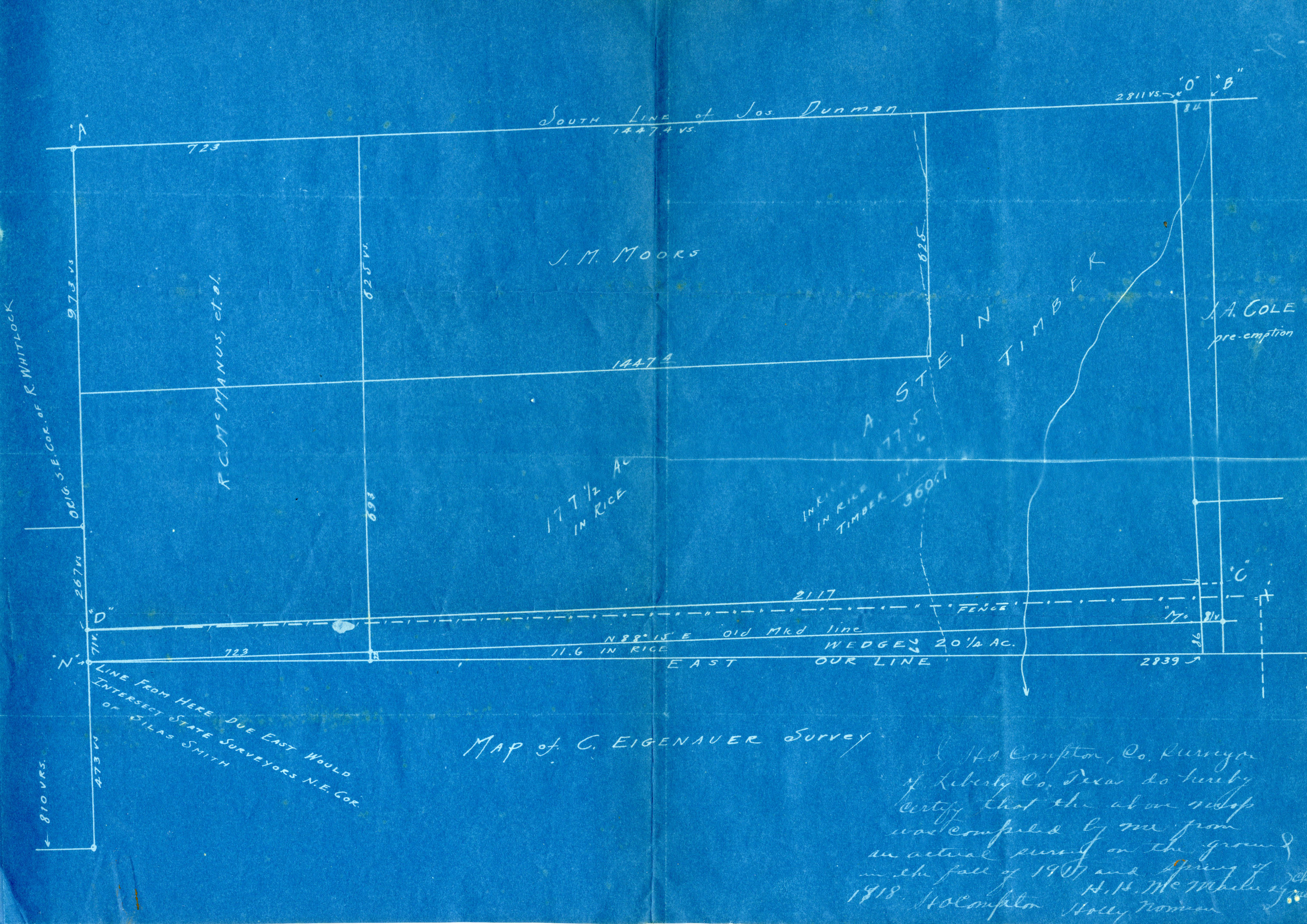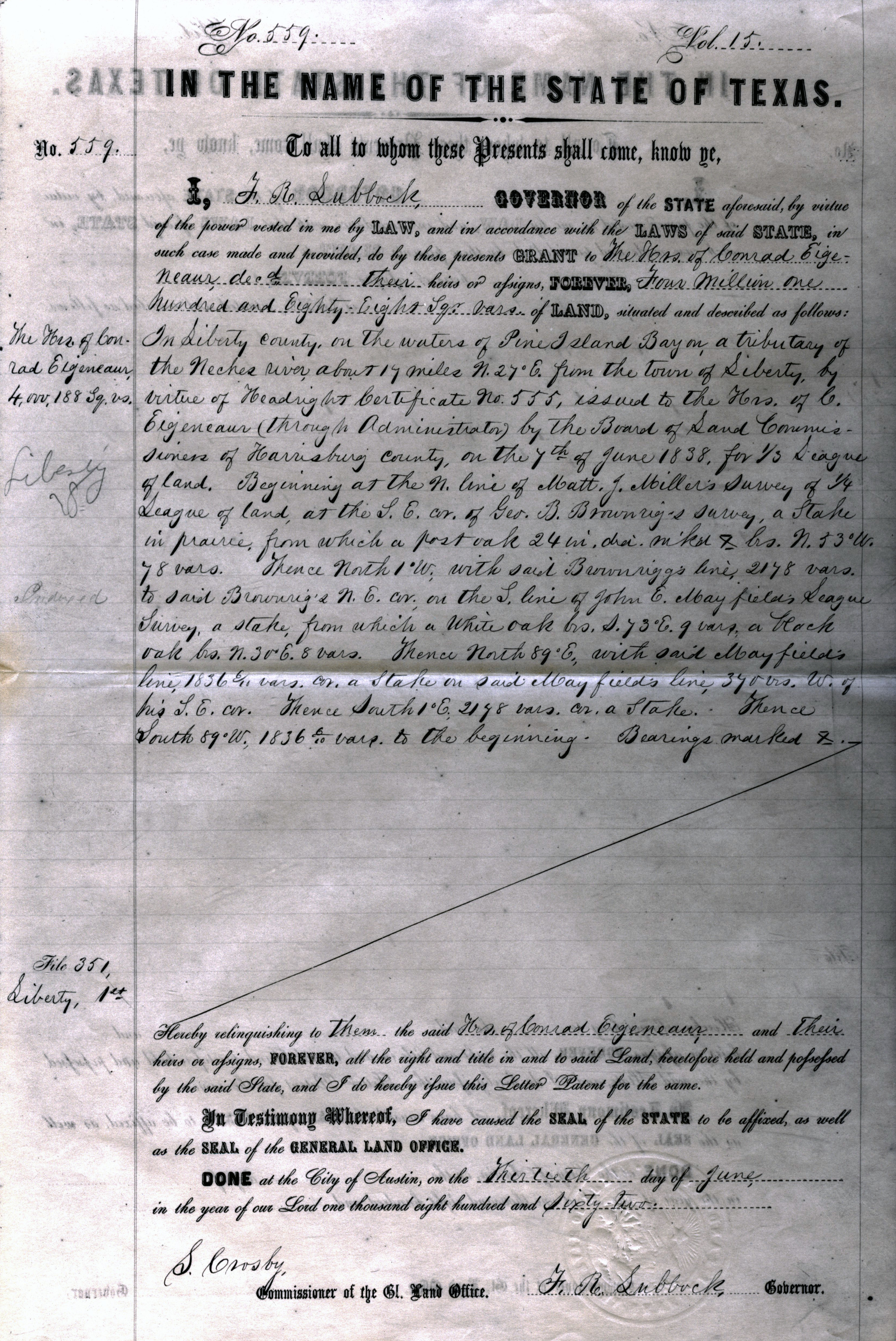

Bradford Pickett Papers of Adams v. Slattery (1838-1996) examine an adverse possession case that tracks the history and ownership of land granted by the Republic of Texas to heirs of a soldier killed in battle during Texas Revolution. Bradford Pickett represented the plaintiffs.
Conrad Eigeneaur (Eichenauer), a German immigrant, died in the Battle of Coleto Creek while fighting for Texas independence on March 19-20, 1936. The fight preceded the infamous Goliad massacre on March 27, where over 300 prisoners of war were executed under the orders of the Mexican General Antonio Lopez de Santa Anna. Under the new Texas land settlement laws of 1837, single men who arrived in Texas prior to March 2, 1836, were entitled to a 1/3 league of land, issued to the Eigeneaur heirs in 1838 by the newly created General Land Office. A league, normally a unit of length, was an old Spanish customary unit of area frequently used in the early land grants along with other archaic units such as varas, labors, sitios, and haciendas. In addition, heirs of independence fighters killed in battle under the leadership of commanders Fannin, Ward, Travis, Grand, or Johnson were entitled to 640 acres of land, and another certificate was issued in 1838 by the Secretary of War.

The history of the land going forward is fraught with inconsistencies and competing claims. Eigeneaur died intestate, without wife or children. His distant heirs from Germany asserted ownership by selling the land and recording a power of attorney instrument in Liberty County, but only in 1895. By that time, evidence of adverse possession was already present, with competing claim to title arising in 1903. It appears that the land may have been sold by the estate administrator around 1839, but evidence of such final conveyance does not exist. The Liberty Courthouse fires of 1872 and 1874 destroyed records that would have been helpful in establishing the history of land ownership prior to that date and the validity of titles and transfers going forward.
In 1940, the plaintiffs filed suit in court. According to Texas law, when certain title records are missing, the jury may make a presumption that a sale or a deed has been made by examining evidence presented at trial, the rule the Texas Supreme Court affirmed in its opinion of this case. Among the evidence for possession of title are tax assessment and tax payment records, witness testimony, selling, leasing, improving, or living on the land for a certain period of time without objection by competing claimants, and investing an agent with power of attorney to administrate the land. Eventually, the parties settled to a 70-30% division of land in 1958 after the case was sent back to the district court for a new trial by jury. In 1977, 551.85 acres of this previously contested territory were appropriated by the federal government for incorporation into Big Thicket National Preserve.

